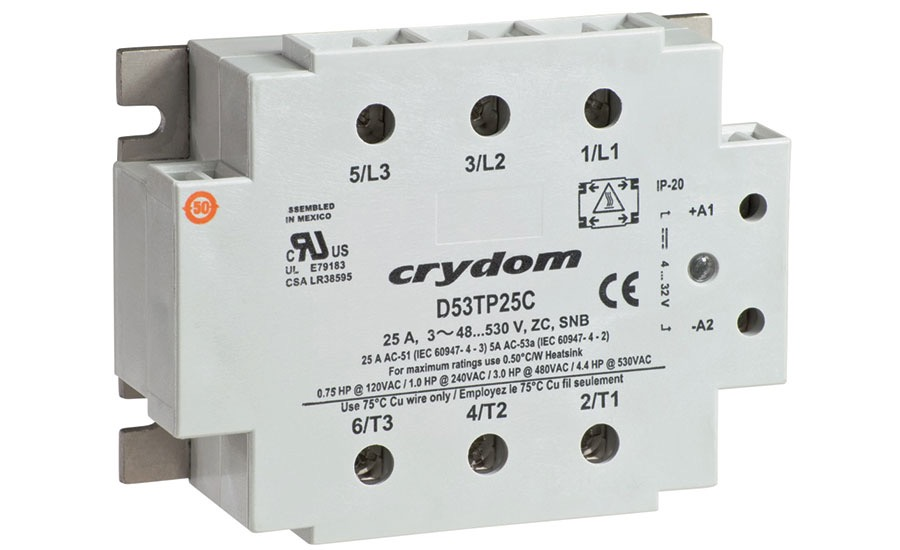Solid-State Relays Engineered to Avoid Overheating
Emerging solid-state relay designs offer integrated thermal production in load control applications that can prevent overheating and improve system safety, efficiency and longevity.
As solid-state relays generate heat when conducting a current, there is thermal management to their operation. Should overheating occur and damage a solid-state relay, disgnosing and replacing the solid-state relay can take time while the assembly line or manufacturing system is down and out of service, running up even more costs.
To tackle the overheating challenge, mordern solid-state relay technology was developed that integrates a thermostat inside the solid-state relay. This helps ensure that the relay always operates in a safe or protected mode. Retaining the inherent afvantages of standard solid-state relay technology, the new design is differentiated by its ability to prevent the solid state relay from overheating; thus, it protects component and system operation from potential damages or shutdown.

The solid-state relay cuts off input circuit power when the temperature goes beyond the specified maximum as determined by the application requirements. Power is automatically turned on again when the temperature has cooled down to within the normal operating range. This automatic thermal protection is accomplished by means of an integrated thermostat embedded in the solid-state relay. The thermostat senses the internal temperature of a mechanical interface with a metal plate where the internal power-switching device is mounted. If the heat exceeds the normal range, it sends a signal to the solid-state relay to turn off the power. This built-in thermal protection completely prevents overheating conditions by providing a trip before equipment damage can occur.
The integrated thermal protection function also can help identify design issues in the system such as:
Incorrect heat-sinking capacity in the solid-state relay or system.
Poor installation resulting in insufficient heat-sinking contact.
Heat dissipation efficiency of the system.
This provides a troubleshooting tool to the engineer responsible for the process system’s operation.
The solid-state relay designs can be adapted to many temperature control applications such as industrial ovens, sterilization equipment, molding and extrusion machinery, and welding equipment. Other uses include heavy-duty conveyor systems such as those in construction, mining, packaging and material handling. For example, consider a conveyor belt application where a motor could stick and cause overload and potential damage to the system. In this case, the solid-state relay with integrated thermal protection would prevent overheating from occurring by shutting down the conveyor belt as soon as a predetermined heat threshold was met within the solid-state relay’s thermostat.
In injection-molding applications, where limited space can cause the temperature in the cabinet to rise, thermal protection prevents the solid-state relay from overheating if the heat sinking is not adequate, thus avoiding costly repairs. For heating systems, the thermally protected solid-state relay can help shut down the heating element if there is a problem with the temperature controller that causes a temperature runaway, thereby protecting the entire system.
In conclusion, engineers are now working to develop thermally protected solid-state relay technology with decision-making capability inside the solid-state relay package. This technology incorporates a microcontroller with firmware specific to the desired internal trip temperature that activates a decision from the preprogrammed software settings. This capability will make motor and system protection from over-heating and breakdown more automated than ever.
Since the 1970s, traditional solid-state relays have offered a proven electronic switching solution for a variety of applications. They provide a longer lasting, more versatile, flexible and robust solution than electromechanical relays.
Solid-state relays with integrated thermostats can prevent overheating and identify heat sinking issues to help improve system safety, efficiency and longevity. This product evolution may change thermal protection for a range of applications.
 中文
中文



.png) Search
Search


 >
>  Return to List
Return to List